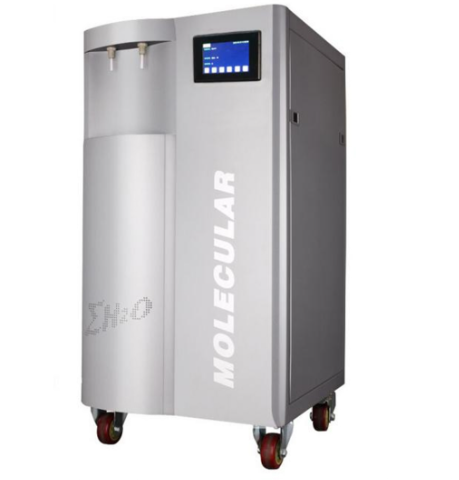Water scarcity and contamination have become critical global challenges, making efficient water treatment technologies essential for ensuring access to safe water. Among these technologies, ultrafiltration (UF) stands out as a reliable and versatile solution, playing a pivotal role in purifying water across residential, industrial, and municipal sectors. This article explores the core functions, working principles, applications, and advantages of ultrafiltration in modern water treatment systems.
How Ultrafiltration Works: A Closer Look at the Technology
Ultrafiltration is a membrane-based separation process that uses semi-permeable membranes with microscopic pores (typically ranging from 0.001 to 0.1 micrometers) to remove impurities from water. Unlike conventional filtration methods that rely on physical sieving of large particles, UF membranes target smaller contaminants while allowing water molecules, ions, and small organic compounds to pass through.
The process operates under low to moderate pressure (usually 0.1–1.0 MPa), which drives water through the membrane. Contaminants such as suspended solids, colloids, bacteria (e.g., E. coli), viruses, and large organic molecules (like humic acids) are retained on the membrane surface, forming a "cake layer" that is periodically cleaned via backwashing or chemical rinsing to maintain membrane efficiency. This mechanism ensures consistent purification without the need for harsh chemicals, distinguishing UF from processes like coagulation or chlorination that may leave residual byproducts.
Key Applications of Ultrafiltration in Water Treatment
Ultrafiltration’s adaptability makes it suitable for a wide range of water treatment scenarios, addressing diverse contamination challenges.
In municipal water treatment, UF has become a cornerstone for producing drinking water. It replaces or complements traditional sand filtration, effectively removing pathogens and turbidity. For example, many cities in Europe and Asia use UF systems to treat surface water (lakes, rivers) or groundwater, ensuring compliance with strict drinking water standards (such as the WHO’s Guidelines for Drinking-Water Quality).
In industrial settings, UF plays a critical role in process water recycling and wastewater treatment. Industries like electronics, pharmaceuticals, and food processing require high-purity water; UF removes contaminants that could damage equipment or compromise product quality. Additionally, UF treats industrial wastewater (e.g., from textile or chemical plants) by separating solids and organic matter, enabling water reuse and reducing discharge volumes.
Residentially, point-of-use (POU) UF systems (e.g., under-sink filters) are gaining popularity, especially in regions with unreliable tap water. These compact systems provide households with on-demand clean water, filtering out bacteria and particulates without altering the water’s mineral content.
Advantages of Ultrafiltration: Why It Stands Out
Ultrafiltration offers distinct benefits that make it a preferred choice over other water treatment technologies.
First, it delivers high purification efficiency—UF membranes can remove up to 99.9% of bacteria and viruses, far exceeding the capabilities of conventional filters. This is crucial for preventing waterborne diseases in both developed and developing regions.
Second, it is environmentally friendly. Unlike chemical treatment methods, UF uses minimal or no chemicals, reducing the risk of harmful byproducts (e.g., disinfection byproducts like trihalomethanes) and lowering carbon footprints. The ability to reuse treated water further enhances its sustainability.
Third, UF systems are easy to operate and maintain. They have fewer moving parts than complex filtration setups, require less manual intervention, and have longer membrane lifespans (typically 2–5 years with proper care). This makes them cost-effective in the long run, even for small-scale applications.
Concludsion
While ultrafiltration excels at removing particulates and pathogens, some water treatment needs—such as reducing dissolved salts, heavy metals, or nitrates (common in drinking water)—require more specialized technology. This is where nanofiltration (NF) shines, and Molewater’s Nanofiltration for Drinking Water Treatment emerges as a top-tier solution.

